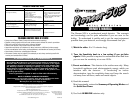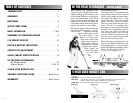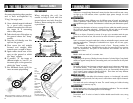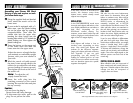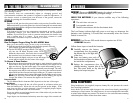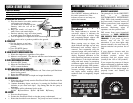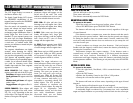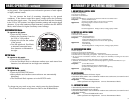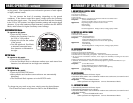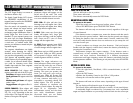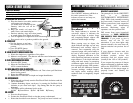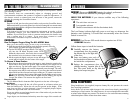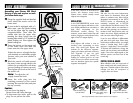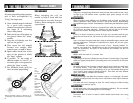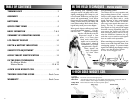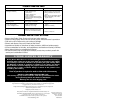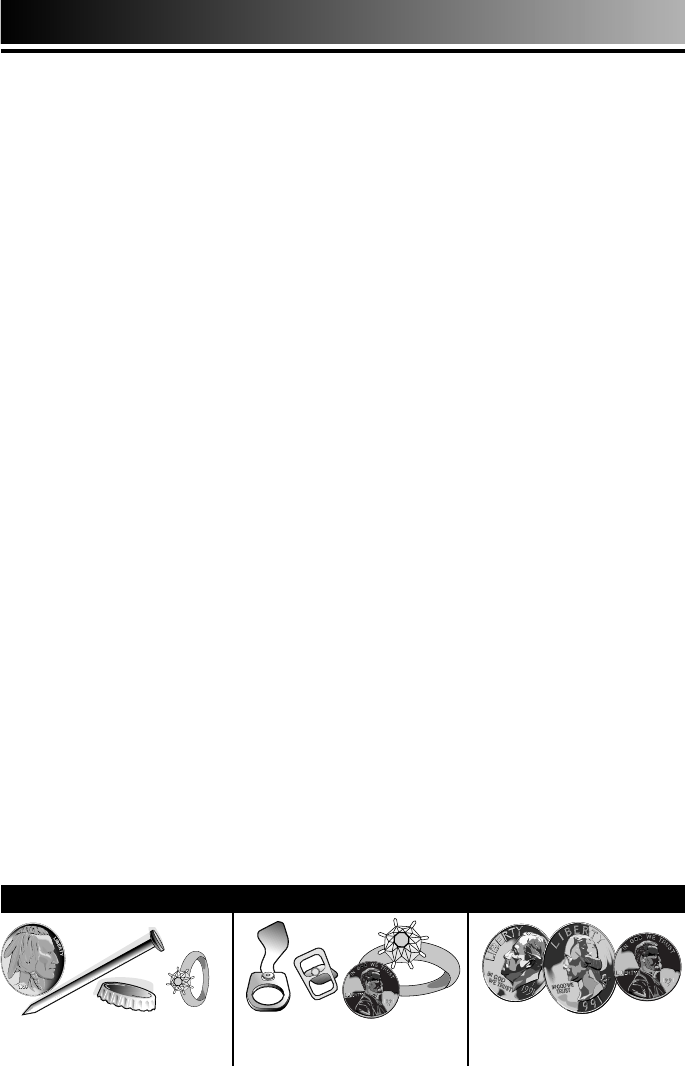
134
EASY ASSEMBLY
Search Coil
Search
Coil
Cable
Upper
Stem
Control
Housing
Plug
Lower
Stem
Assembling your Pioneer 505 Metal
Detector is easy and requires no tools.
Just follow these steps:
●
1 Using the supplied bolt and knurled
knob, attach the search coil to the
lower stem.
●
2 If your model is equipped with a 3-
piece stem, open the plastic locking
nut on the upper tube by rotating it
counterclockwise. Then slide the
middle tube into the upper tube,
inserting the silver button into the
locating hole which is 1/2” behind the
plastic locking nut. Now tighten the
plastic locking nut.
●
3 Press the button on the upper end
of the lower stem and slide the
lower stem into the upper stem.
Adjust the stem to a length that lets
you maintain a comfortable upright
posture, with your arm relaxed at
your side.
●
4 Wind the search coil cable around
the stem. Leave enough slack in the
cable to let you adjust the coil when
you are hunting on uneven ground.
Then tighten the knob at the end of
the search coil.
Note:
To adjust the coil,
simply loosen the knob.
●
5 Insert the coil’s plug into the
matching connector on the control
housing. Be sure the holes and pins
line up correctly.
Caution:
• Do not force the plug in.
Excess force will cause damage.
• To disconnect the cable, pull on the
plug. Do not pull on the cable.
Lower
Stem
Upper
Stem
Connector
on back of
control housing
Bolt
Knurled
Knob
Bottom view
Bottom side
AUDIO TARGET ID
-Motion modes only
In the DISC, NOTCH or AUTONOTCH
modes, the detector emits three
distinct tones, which classify metal
objects into categories
IRON & STEEL:
In the DISCRIMINATION mode most
iron and steel objects will induce a low
tone. Highly oxidized iron can induce a
high tone, depending on the
Disc/Notch control setting. For
instance, some rusted bottle caps will
induce a high tone and indicate to the
right of the LCD target display.
GOLD:
Gold objects will induce a low or
medium tone, depending on their
sizes. Very small gold objects will
indicate on the left-most segment.
Large gold objects will read under the
Zinc segment. If you are gold
prospecting, you will usually be
looking for natural gold in an area
which it does not contain much trash,
and can therefore ignore the specific
segment descriptions.
PULL TABS:
Pull tabs are the most bothersome
trash items for detectorist. Most will
induce a medium tone. Most will be
eliminated automatically in the AUTO
NOTCH mode, or alternatively be
manually “notched out” in NOTCH
mode with the Disc/Notch control. The
older pull tabs (those not attached to
the can after opening) are sometimes
broken in half; these broken tabs can
induce low tones. Highly oxidized pull
tabs can also induce high tones.
It can be very difficult to differentiate
pull tabs from gold rings. When they
both induce medium tones, you might
notice a “double beep” from a gold
ring but a “single beep” from pull tabs.
To achieve this distinction, sweep the
search coil very slowly, and at different
angles. Two tones might signal as the
detector passes over each side of the
round ring.
COPPER, SILVER & BRASS:
Most valuable coins are composed of
these metals and will usually induce a
high tone. Valuable objects other than
coinage can also be composed of
copper, silver and brass.
LOW TONE
Nails & Bottle Caps,
Gold & Nickel
MEDIUM TONE
Old & New Pull Tabs, Zinc,
Pennies (Post 1982), Larger
Gold Objects
HIGH TONE
Copper, Silver & Brass
Copper Pennies (Pre 1982)
Audio Target Identification (ATI) classifies metals into three categories.



